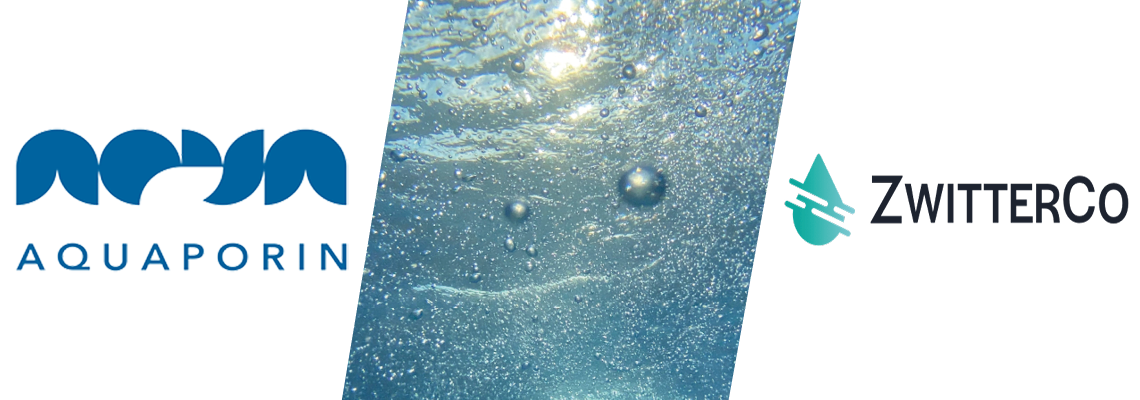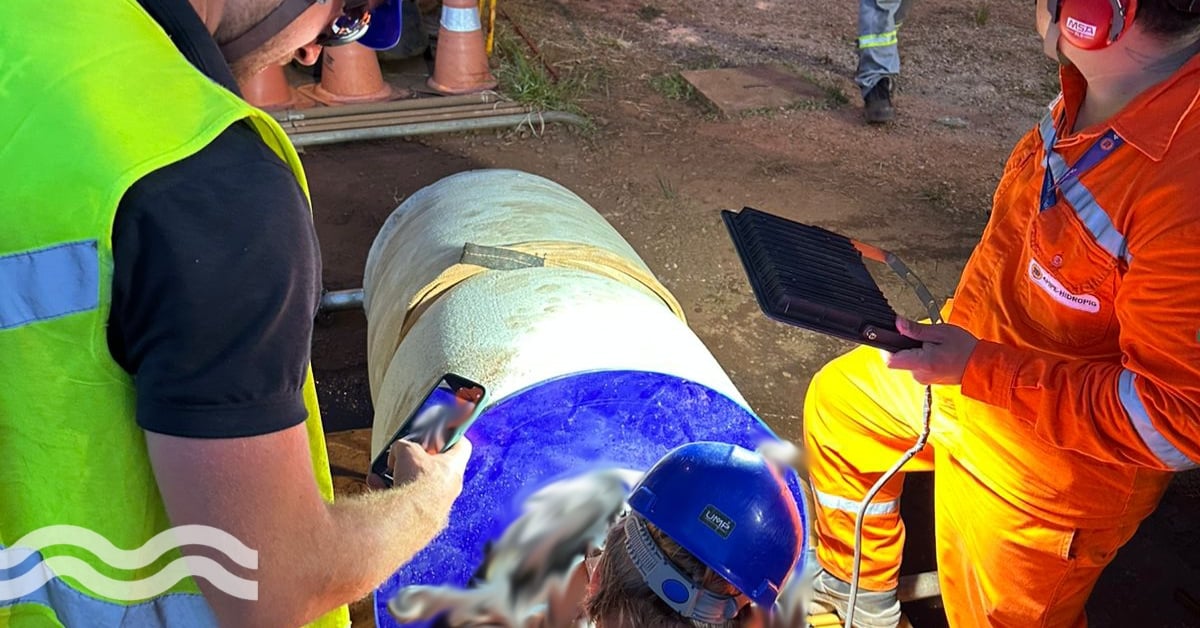Pioneering water treatment membranes with new materials
Materials science breakthroughs are holding the promise of new routes and new levels of efficiency for the treatment and separation of water.
With even the most challenging industrial effluents found now falling within the scope of membrane separation technologies, these new materials are offering new approaches to clean water.
Materials breakthrough offers new approach to challenging effluents
ZwitterCo uses a technology that relies on zwitterionic polymers. These materials feature molecular chains with equal numbers of positive and negative ions (cations and anions).
This characteristic makes such polymers both very hydrophilic but also extremely resistant to the fouling that impacts the filtration efficiency of many other membrane materials. It puts ZwitterCo in the enviable position of being able to filter effluents that are otherwise not manageable with conventional membrane treatments.
Using technology originally developed by assistant chemical and biological engineering professor at Tufts University, Ayse Asatekin, Alex Rappaport founded ZwitterCo with the aim of producing membrane-based nanofiltration separation technologies. Combining zwitterions with other molecules, Asatekin has produced membranes with pores of only a nanometre or two.
Backed by a new $5.9 million Series Seed financing round led by filtration and separation technologies company Mann+Hummel Corporate Ventures, the company aims to use the investment to scale up and commercialise its technology, completing final field testing in several key markets and expanding commercial production.
"The disruptive potential of ZwitterCo’s membrane technology has been evident since day one," noted Stephen Remondi, Managing Director of R-Cubed Capital Partners, which also worked on placing the seed funding investment.
"The disruptive potential of ZwitterCo’s membrane technology has been evident since day one.”
The properties of zwtterionic materials makes them highly suitable for separation in difficult to treat effluents which contain fats, oils, proteins or other organic molecules that are typically difficult to treat using conventional technologies.
The company is targeting agricultural, food and beverage and other biological sectors as part of its push for commercial success. Using its membrane filtration technology, Rappaport claims that 80 to 90 per cent of the effluent can be reused or discharged to the existing sewage system leaving just 10 to 20 per cent of the waste water needing additional treatment.
Created in 2018, ZwitterCo nanofiltration membranes are expected to represent a significant cost saving for companies.
“The cost to truck away oily greasy water is 20 to 50 times more expensive than if you were to just put that down the drain and pay the traditional municipal sewer rates,” Rappaport reportedly said, adding: “We reduce the amount of trucking that these groups have to do because we can do further refinement of the wastewater. Rather than going into a truck, it goes into our membrane systems.” The business model is designed around a low-capital monthly service fee structure for discharge treatment.
Robust, resistant to fouling and easily cleaned, field trials and industrial pilot studies are currently underway with the company claiming commercial contracts are set to go ahead.
“There are clear and urgent challenges in water that ZwitterCo’s solutions can address, including opportunities to expand reuse, solve production bottlenecks, ensure discharge compliance, convert waste streams into valuable products and more,” Rappaport said in a statement. “Everything we’re doing right now is around product design and scaling”.
Novel membrane boost for efficiency
Danish cleantech company Aquaporin A/S has developed another breakthrough water treatment technology based on novel membrane materials. Their approach mimics the biological water transport process found in living cells.
The aquaporin water channel protein enables water transfer across the cell membrane but is highly selective. Discovered by Professor Peter Agre, aquaporins are found in all living cells including the kidney for example.
Aquaporin A/S now uses this discovery in its industrial and household water filtration technology. Natural membranes have exceptional mechanical and chemical stability even when exposed to a wide range of different stresses and therefore show promise in challenging water treatment applications. The membranes can be used in both forward osmosis (FO) and reverse osmosis (RO) applications.
Aquaporin together with BIOFOS, Denmark’s largest water utility, is currently demonstrating its technology in a forward osmosis application to remove micropollutants such as plastics from municipal wastewater.
In the BONUS Cleanwater project membrane bioreactor effluent is being used as the feed, achieving a 65 per cent recovery rate and rejecting a minimum of 95 per cent of micropollutants.
“In terms of removing micropollutants, we saw the best results with Aquaporin. In fact, the quality was higher than we need here in Denmark,” said Dines Thornberg, Head of the BIOFOS’ R&D department.
“The solution has great potential in countries where water scarcity is an issue. I could imagine a scenario where the wastewater is upgraded and used for drinking water or sold to industry, for example as energy plant cooling water,” he added.
"In terms of removing micropollutants, we saw the best results with Aquaporin. In fact, the quality was higher than we need here in Denmark.”
Aquaporin is also working with the Danish Aerospace Company (DAS) to commercialise its technology in space applications.
Further materials breakthroughs are improving the efficiency of membrane filtration in desalination applications. For example, research from The University of Texas at Austin, Penn State and others and backed by DuPont Water Solutions has determined that density fluctuations on the nanoscale have a significant impact on the efficiency of desalination membranes.
Recently published research findings reveal a 30-40 per cent increase in efficiency in membranes in which precise control of density had been achieved.
Contrary to previous understanding, researchers found that the membrane thickness is less important than avoiding dense nanoscale regions. Homogenizing density at the nanoscale offers a new route to increasing membrane efficiency, making water purification more sustainable, productive, and economic, the scientists say.
“With this knowledge of the impact of uniform membrane density, at a nanoscale, on water transport we can continue to innovate the next generation of membranes that will not only help reduce global water scarcity, but also minimize energy consumption and environmental impact,” said HP Nanda, global vice president and general manager at DuPont Water Solutions.
According to a new report from Meticulous Research, the industrial wastewater treatment market is expected to grow at a CAGR of 7.2 per cent from 2020 to 2027 to reach $77.6 billion by 2027.
It is clear that the demand for new and more efficient processes is accelerating and that breakthroughs in materials sciences are opening up new routes to cost effective treatment that can deliver clean water.
Related content
- Graphene start-up bets on oxide coating to create fouling resistant membranes
- Membrane start-up backed to take on unfilterable waters
- Ceramic membranes tide set to change
Share your water technology stories with us
Do you have an innovation, research results or an other interesting topic you would like to share with the international water technology industry? The Aquatech website and social media channels are a great platform to showcase your stories!
Please contact our Sr Brand Marketing Manager Annelie Koomen.
Are you an Aquatech exhibitor?
Make sure you add your latest press releases to your Company Profile in the Exhibitor Portal for free exposure.
We promise never to send you spam and you can unsubscribe at any time!



